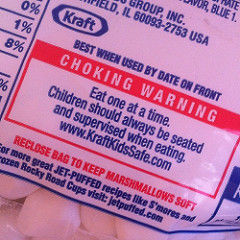
Choking. A topic not necessarily discussed often in the animal world, though it definitely should be. The reason I find it imperative to discuss is because of my own experience that occurred just last week. Our little Gizmo nearly suffocated to death because he was choking, and had I not been vigilant of his slightly abnormal behavior, he would likely no longer be with us. A little background then may be helpful. Gizmo is a rescue and we’ve had him for only two months. He’s estimated between 2.5-9 years old (serious statement, this is what the vets think!) and he’s twelve pounds. This little munchkin has a smooshed face and since we’ve had him has struggle with his breathing. His sinuses are clogged regularly and he sneezes all the time. We are doing a lot of alternative treatments that have helped his breathing and sinuses, but still it’s very distinctive.
Last Friday I came home from work earlier than usual and let him out of his crate (he cannot be trusted loose just yet, too much cat food has gone missing…). While making lunch about ten minutes later I noticed he was repeatedly opening and closing his mouth. It was almost like a ventriloquist dummy being operated nonstop. This had me worried so I quickly opened his mouth and checked his airway and didn’t see anything in the way, after sticking my finger down his throat there was nothing here either. When I approached him he tried to hide and run away while tucking his tail (very opposite his normal personality). Nothing was chewed up, destroyed, and he couldn’t have gotten into anything since he had been crated. He wasn’t coughing, licking his lips, and worst of all he wasn’t sneezing. I began to get even more worried when I noticed his tongue had started to turn blue.

Tell Tale Signs
This is a tell tale sign of oxygen loss. If there is oxygen loss in the blood, the tongue will begin to change color and the gums will follow suit. Because he wasn’t trying to cough anything up, I was petrified. Rushing him to the vet, they immediately put an oxygen mask on him and began examining his mouth. Nothing was there that shouldn’t be. Because the opening and closing of his mouth continued, we knew something wasn’t right. He was x-rayed and nothing was abnormal anywhere on film. My vet decided to sedate him and scope his throat. The scope was nearly all the way to his stomach when he said he thought he felt something “pop”. He removed the scope and slowly Gizmo coughed and closed his mouth…without immediately opening it. While waking up, his tongue began to pinken and his heart rate started to slow. By the time he was completely with it, Gizmo was back to sneezing and breathing as he normally does. What happened to him, we still don’t know. 
It could’ve been an awful day, but thanks to my noticing a blue tongue it had a very different outcome. Some signs of airway blockage include gums and tongues drying out and turning blue, a change in heart rate, coughing, attempting to vomit, change in behavior. Knowing the general signs of oxygen loss and be the difference between life and death for your animal, educate yourself and always trust your gut. If something doesn’t seem right with your furry one, it probably isn’t, and consult your vet ASAP.
Photo Credits:
abdominal thrusts for choking via photopin (license)
Warning via photopin (license)
Breathing in fumes 2 (study) via photopin (license)

